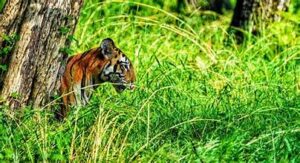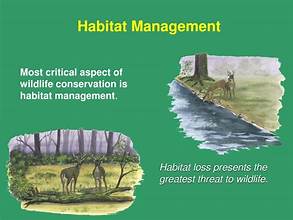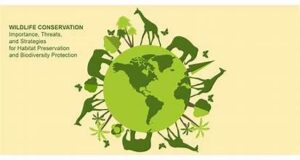
Wildlife habitat conservation is a critical aspect of environmental protection, crucial for maintaining biodiversity and ecosystem health. As human activities continue to impact natural habitats, the integration of technology into conservation efforts has become indispensable. This article explores how technology enhances wildlife habitat conservation, driving innovation and effectiveness in protecting our planet’s most vulnerable ecosystems.
1. Remote Sensing and Satellite Imaging
Remote sensing and satellite imaging have revolutionized wildlife habitat conservation by providing comprehensive and real-time data on land use changes, deforestation, and habitat fragmentation. These technologies enable conservationists to monitor large and inaccessible areas that were previously difficult to survey.
- Monitoring Changes: Satellites can track deforestation rates and land-use changes over time, helping identify regions where conservation efforts are needed most.
- Mapping Habitats: High-resolution images allow for the creation of detailed habitat maps, aiding in the assessment of habitat quality and connectivity.
2. Geographic Information Systems (GIS)
Geographic Information Systems (GIS) play a crucial role in wildlife habitat conservation by integrating spatial data and analysis. GIS tools help in mapping and analyzing habitats, species distribution, and environmental variables.
- Habitat Analysis: GIS helps in evaluating habitat suitability and identifying critical areas for protection or restoration.
- Planning and Management: It assists in planning conservation strategies and managing protected areas effectively.
3. Drones and Unmanned Aerial Vehicles (UAVs)
Drones and UAVs have become invaluable tools in wildlife conservation, offering a cost-effective way to collect data and monitor habitats.
- Surveillance: Drones can provide aerial views of wildlife populations, track poaching activities, and assess habitat conditions.
- Mapping and Surveys: They can create detailed 3D maps of terrain and vegetation, improving habitat assessments and conservation planning.
4. Camera Traps and Sensor Technology
Camera traps and sensor technology have transformed wildlife monitoring by providing insights into animal behavior, population dynamics, and habitat use.
- Behavioral Studies: Camera traps capture images and videos of wildlife in their natural habitats, aiding in the study of animal behavior and interactions.
- Population Monitoring: Sensors can track movement patterns and population sizes, offering valuable data for conservation strategies.
5. Artificial Intelligence (AI) and Machine Learning
Artificial Intelligence (AI) and machine learning are increasingly used in wildlife conservation to analyze vast amounts of data and enhance decision-making processes.
- Data Analysis: AI algorithms can process images from camera traps and satellite data to identify species, count individuals, and detect anomalies.
- Predictive Modeling: Machine learning models can predict the impacts of environmental changes on wildlife populations and habitats, guiding proactive conservation measures.
6. Genetic Research and Biotechnology
Genetic research and biotechnology play a significant role in conservation by providing tools for studying genetic diversity and managing endangered species.
- Genetic Monitoring: Techniques like DNA barcoding help identify and monitor species, track genetic diversity, and detect illegal wildlife trade.
- Conservation Genetics: Biotechnology aids in breeding programs and reintroduction efforts by ensuring genetic health and adaptability.
7. Citizen Science and Crowdsourcing
Citizen science and crowdsourcing leverage the power of the public to contribute to wildlife conservation efforts through data collection and monitoring.
- Data Collection: Apps and online platforms enable individuals to report wildlife sightings, contribute to habitat mapping, and participate in conservation projects.
- Awareness and Engagement: Engaging the public in conservation efforts raises awareness and fosters a sense of responsibility towards wildlife protection.
8. Smart Technologies for Poaching Prevention
Technology has also advanced the fight against wildlife poaching through the development of smart systems and solutions.
- Anti-Poaching Surveillance: Advanced sensors, motion detectors, and drones are used to monitor protected areas and detect illegal activities.
- Tracking Devices: GPS collars and satellite tags help track the movements of endangered species and provide real-time data to anti-poaching teams.
9. Sustainable Technology Innovations
The development of sustainable technologies contributes to conservation by minimizing environmental impact and promoting eco-friendly practices.
- Green Technologies: Innovations such as solar-powered sensors and energy-efficient equipment reduce the ecological footprint of conservation activities.
- Habitat Restoration: Technology-driven methods, like drone seeding and automated planting, enhance habitat restoration efforts.
Conclusion
The integration of technology into wildlife habitat conservation efforts has significantly improved the effectiveness and scope of conservation practices. From remote sensing and GIS to AI and citizen science, technology offers powerful tools for monitoring, analyzing, and protecting wildlife habitats. By harnessing these technological advancements, we can enhance our conservation strategies and work towards a sustainable future for our planet’s diverse ecosystems.


